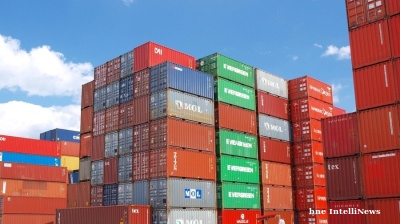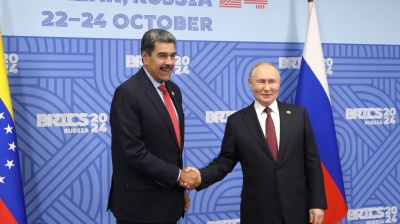Russian manufacturing downturn eases with PMI of 49.3 in April, slightly up from March, but still underwater

The Russian manufacturing sector remained in decline in April, though at a slower pace, as easing contractions in output and new orders coincided with the weakest rise in input costs since early 2020, S&P Global reported on May 3. (chart)
The seasonally adjusted S&P Global Russia Manufacturing Purchasing Managers’ Index rose to 49.3 in April from 48.2 in March, signalling a second consecutive monthly deterioration in operating conditions, but still below the 50 no-change benchmark. The latest figure suggests the overall downturn was marginal.
“April data indicated a further decline in output at Russian manufacturers, although the pace of contraction eased to only a marginal rate,” S&P Global said. The slowdown in output and new sales was attributed to continued subdued demand in both domestic and international markets. Companies cited reduced customer purchasing power and heightened competition as key factors limiting growth.
The slowdown comes on the back of strong gains last year, but the Central Bank of Russia (CBR) and Ministry of Finance (MinFin) have engineered a slowdown using non-monetary policy methods in order to tackle sticky high inflation and a cooling of the economy this year was widely expected. The authorities are trying to engineer a soft landing for the economy, but it remains a matter of debate as to if there will be a wave of bankruptcies later this year or if the Russian economy is more robust than first appears.
President Vladimir Putin assures business leaders and the public last week that the current GDP growth slowdown—1.9% annually for January-February—is a planned corrective to curb inflation. According to Russia’s Ministry of Economic Development, GDP growth was 4.3% last year.
“Taken at face value, these figures suggest the Russian economy is hitting its pre-COVID structural ceiling while allocating vast resources to the war and distributing large cash payments to contract soldiers,” analyst Nicholas Trickett said in a note for Riddle Russia.
Since December, industrial output has been trending toward stagnation, further dragged down by declining investment in resource extraction, says Trickett. Russian Finance Minister Anton Siluanov is more optimistic predicting that economic growth in Russia is expected to be 1.8% in 2025 in the high risk sceanrio, compared with 2.5% in the base scenario.
Total new orders declined for the second month, with new export sales also falling S&P Global reports. Despite this, manufacturers showed resilience in purchasing activity, which rose for the first time in three months, albeit fractionally. Inventories of both pre- and post-production goods continued to fall as firms utilised stock to support current output levels.
Input cost inflation moderated for the fifth consecutive month, reaching its lowest level since February 2020. “Favourable exchange rate movements against the dollar reportedly led to moderated price hikes for imported inputs,” S&P Global noted. Output charge inflation also slowed, reaching its weakest pace since January 2023, as firms aimed to price goods competitively and stimulate sales.
Employment in the manufacturing sector declined in April, ending a three-month run of job creation. “The fall in workforce numbers brought to an end a three-month sequence of job creation but was only marginal overall,” the report said, with firms mostly choosing not to replace voluntary leavers due to sufficient capacity.
Backlogs of work fell at the fastest rate in two-and-a-half years, while suppliers' delivery times stabilised, reaching their most consistent level since November 2019. Some firms noted improved input availability amid lower demand, though others continued to face logistical delays.
Despite softening orders and a slight dip in sentiment from March, Russian manufacturers remained optimistic. “The degree of confidence ticked down from that seen in March, but was historically strong,” S&P Global reported, citing hopes for stronger demand and product expansion plans.
Data
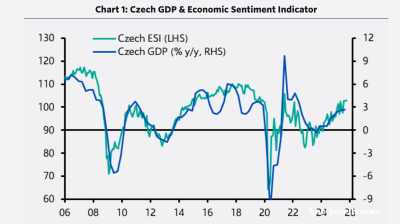
Czech growth accelerates as domestic demand-side pressure builds
The Czech economy delivered an unexpected acceleration in the third quarter, marking a clear shift from its earlier position as a regional underperformer to one of Central and Eastern Europe’s fastest-growing economies.
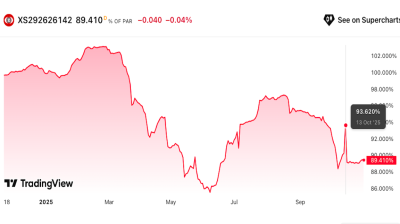
Eurobonds of Istanbul-listed Zorlu units offer attractive yields amid rating downgrades and no default expectation
Debut paper currently offering 14-15% yield.
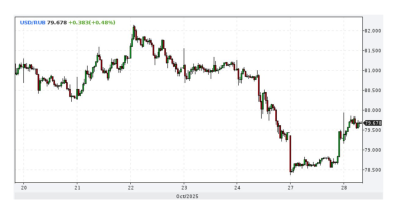
Ruble strengthens as sanctioned oil companies repatriate cash
The Russian ruble strengthened after the Trump administration imposed oil sanctions on Russia’s leading oil companies, extending a rally that began after the Biden administration imposed oil sanctions on Russia in January.

Russia's central bank cuts rates by 50bp to 16.5%
The Central Bank of Russia (CBR) cut rates by 50bp on October 24 to 16.5% in an effort to boost flagging growth despite fears of a revival of inflationary pressure due to an upcoming two percentage point hike in the planned VAT rates.
